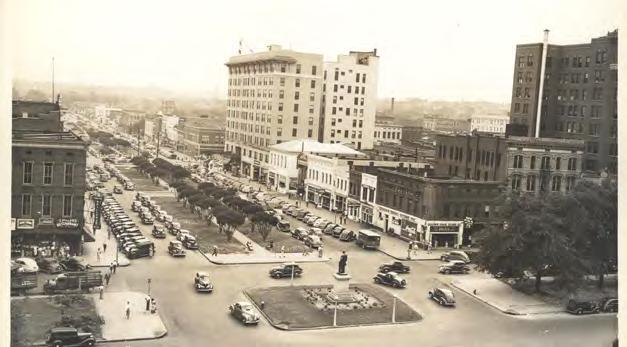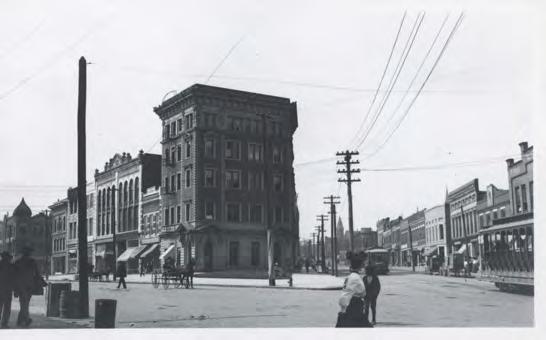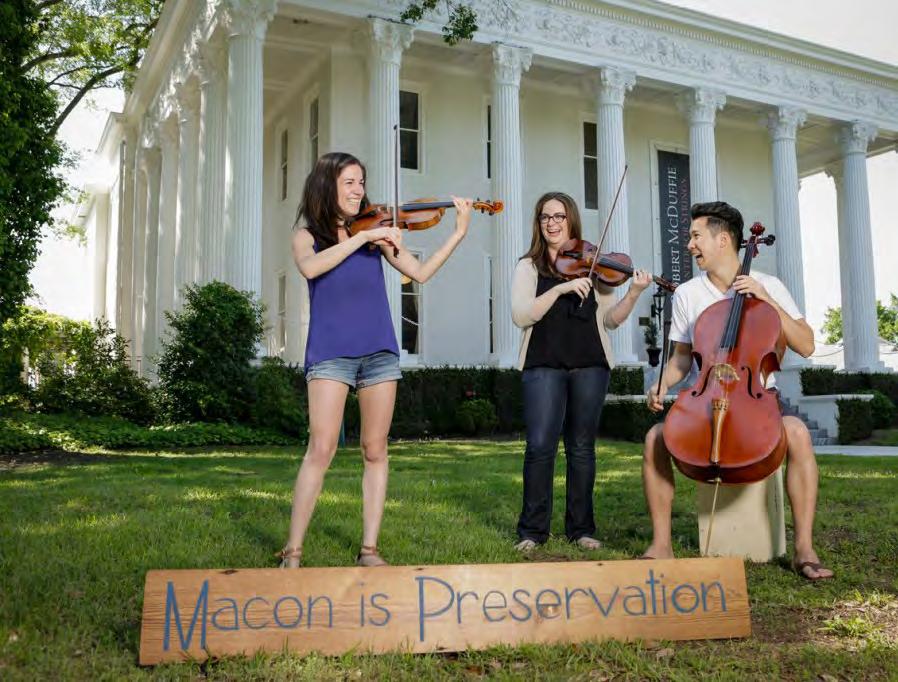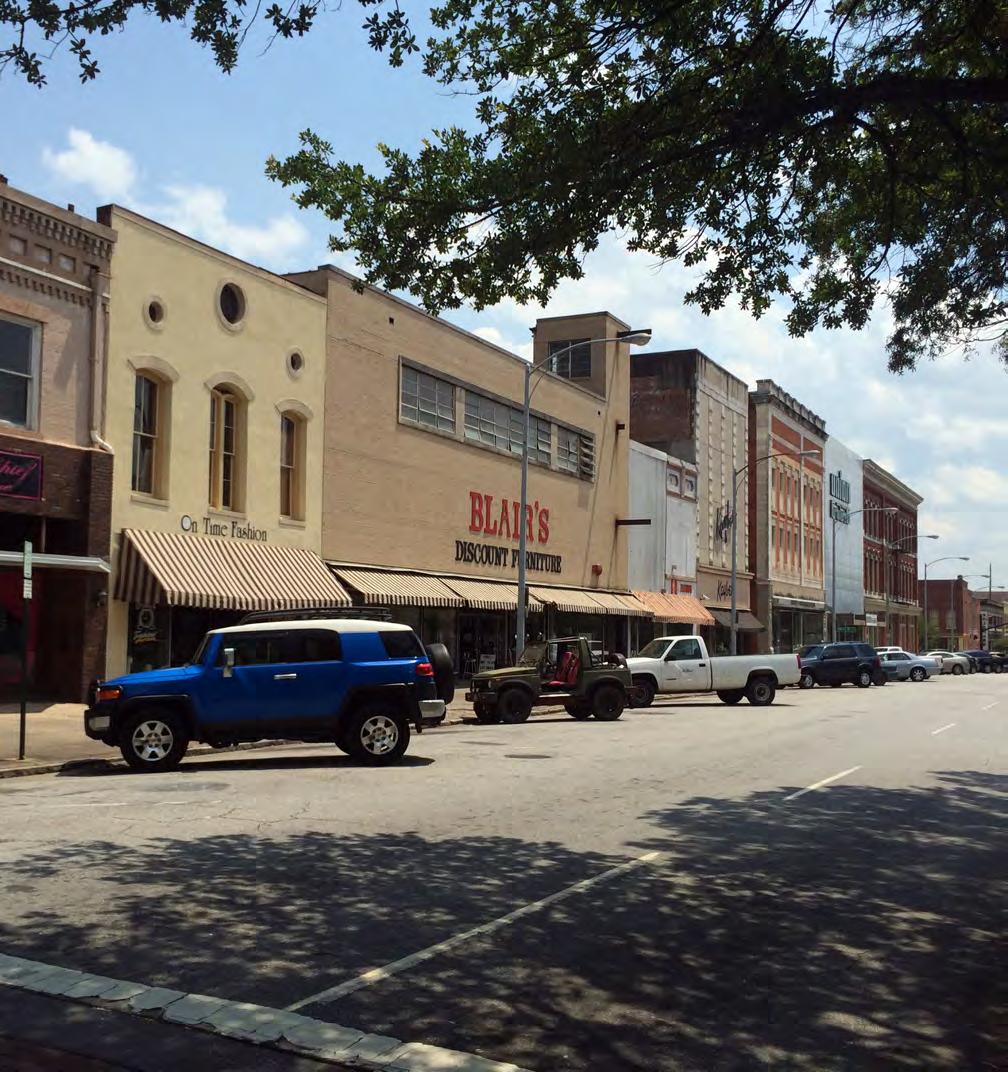
6 minute read
INTRODUCTION
The Macon Action Plan (MAP) is a comprehensive, community-driven plan that envisions the future of downtown and intown neighborhoods. All members of the Macon community –those who live, work, worship, learn, and play in Macon’s Urban Core – were welcomed participants, invited to help craft a collective vision for the future and identify key actions for change to make our shared vision become reality. Thank you to the thousands of you who engaged with the planning process and in doing so enriched this plan. Your words, your ideas, and your energy are present in every page.
Facilitated by the Macon-Bibb Urban Development Authority, Macon-Bibb County, and their partners, MAP is our roadmap to guide change and decision making in coming years. But because the A in MAP is for Action (now!), the MAP movement is already well underway, building upon the positive change afoot in Macon’s Urban Core. With our plan now in place, we turn our full focus to the hard work (and fun!) of implementation – the act of transforming ideas and inspiration into real places and spaces within our Urban Core for all to inhabit and enjoy. That “we” includes you. The success of MAP calls for sustained support and involvement by the whole of our community.
Advertisement
What is the Urban Core?
The “Urban Core” refers to downtown Macon and nearby neighborhoods. The urban core is where the City was first established, and it remains a center of employment, entertainment, and institutions, as well as home to a collection of historic and diverse neighborhoods and communities. The urban core is the heart of Macon.
Macon Action Plan defines the Urban Core as the area bound by I-75 to the west, 7th Street and the Ocmulgee National Monument to the east, Little Richard Penniman Boulevard to the south, and the Emery Highway to the north. As such, the Urban Core includes downtown Macon, Intown, Beall’s Hill, Pleasant Hill, College Hill, Tattnall Heights, Huguenin Heights, and East Macon’s Main Street neighborhood, as well as Macon-Bibb County Government Center, Mercer University, Navicent Health, Coliseum Medical Center, the 7th Street Industrial Corridor, and numerous historic parks, cemeteries, and riverfront trail segments along the Ocmulgee River.
A BRIEF HISTORY OF MACON’S URBAN CORE: yesterday & today
With its location along the Ocmulgee River, present-day Macon evolved from the home of ancient indigenous civilizations, complete with ceremonial mounds now part of the Ocmulgee National Monument, into a prosperous center for commerce and trade developed over the course of the nineteenth century. As Macon entered the twentieth century, a confluence of rail lines, concentration of large downtown buildings, and a strong textile industry defined the city. Macon hosted a dense and vibrant urban environment, with bustling and walkable streets populated by a diverse mix of uses. Its downtown was a center of commercial activity, including an array of shopping options and an active entertainment scene.
Despite its economic success, Macon started to experience a decline in its population in the 1950s. As witnessed by many industrial boomtowns at that time, residents began to push out of the urban core, lured by the new housing and lower cost of living in suburbs. Retail followed suit with the development of new malls that attracted stores and services formerly located downtown. As if these trends were not enough, the new and expanded highways combined with the changing nature of industrial production resulted in the relocation or closure of local factories. Simply put, the loss of residents and jobs directly results in fewer workers, tax payers, customers, visitors, students, and businesses. There was less revenue and economic activity to offset the disinvestment occurring within the City, a challenge still faced by local leaders.


As such, the effects of disinvestment in Macon’s Urban Core remain visible today. Many of the neighborhoods that surround downtown face the challenges of poverty and low incomes. Vacancy and blight have hit these neighborhoods particularly hard, though vacancy can be seen in downtown as well, both in the vacant storefronts visible at street level and in uninhabited upper floors. At the same time, and to Macon’s great benefit, the legacy of the city’s past grandeur is still present in the urban fabric today, and the City enjoys an inventory of beautiful buildings in the National Register of Historic Places, as well as wide and lushly planted streets designed as thoroughfares that pass through the basic grid of the City. These good bones set Macon apart and position the Urban Core for re-growth, contributing to a sense of place and unparalleled backdrop for small-city urban living.
Indeed, Macon’s juxtaposition of decline and grandeur lies at the heart of the central challenge and opportunity for the Urban Core, namely:
• How do we reach our full potential, reactivate our once vibrant streets, and revitalize our intown neighborhoods?
• How do we rebuild a full-service Urban Core where people can live, find work or grow new businesses, and shop to meet their needs downtown or nearby, while also enjoying a quality of life improved by the ability to safely walk or bike, sit in the shade of a public park, or come together with fellow Maconites at a local event?




Much as it took time for residents and businesses to leave the Urban Core, it will take some time to recover. Today, the Urban Core’s total population is only 8,990 residents, yet the traditional downtown area, roughly defined as Pine to Riverside and Fifth to New Streets, had a population of only 440 in 2010, now slightly larger due to the development since that time of new lofts in the area. Overall, the US Census reveals a modest increase in population since 2000 which is promising, but the Urban Core needs substantial and sustained growth in order to regain urban vitality, support a more robust range of retail offerings, rebuild the tax base to upgrade infrastructure and public spaces, and reinforce the tentative inklings that after decades of decline, the Core is heading in the right direction.
This growth must come not only in the form of new residents, but also in the form of new jobs and businesses. The Urban Core hosts over 25,000 jobs, with over half of employees employed at medical institutions. Other major institutional employers include the municipal government, federal court, and Mercer University. Despite this concentration of jobs, commercial activity lags; the Urban Core has a surplus of retail over expenditures, meaning that at present, there are not enough local dollars spent in the Urban Core to support additional stores and services. In order to reach a critical mass and, in turn, help fill in some of the retail spaces, we must attract and retain talent, build more housing, and encourage new business growth and job creation within the Core.
Macon is well-positioned to overcome its challenges. The recent successes of the College Hill Corridor initiative offer proof that the city – and importantly, its citizens – are very capable of planning and following through with actions to implement a plan. In the span of just five years, College Hill welcomed many positive transformations: mixed use development in Mercer Village, an increase in neighborhood housing throughout the Corridor, improved parks, a plethora of new programs, streetscape improvements for a safer, more beautiful public realm, all championed and built through partnerships and grassroots efforts.
Such success is not only limited to College Hill; Macon’s downtown has also experienced a recent boost in development interest and activity. New lofts, breathing new life into old buildings with creativity and vision, are attracting more downtown residents. New retail and restaurants are repopulating storefronts, generating foot traffic and adding much needed buzz and activity to downtown. Streetscape improvements underway on Cherry and 2nd Streets, and along adjacent alleys, are making the Urban Core more walkable and beautiful, a perfect backdrop for new placemaking initiatives that will celebrate and build community within the Core’s unique public realm.
Numerous other recent and proposed projects are scattered throughout the reaches of the Urban Core, and therein lies an issue to address: the efforts to revitalize the Urban Core have momentum but are not always connected. A common refrain from people is that the Urban Core has so many wonderful places and assets but they are too often islands unto themselves. Navicent feels separated from the downtown core. Downtown is not yet well connected to the Ocmulgee Trail. The Ocmulgee National Monument is adjacent to East Macon but not a part of it. These are just some of the many issue raised by stakeholders in this process. The challenge is in “connecting the dots” such that investment and improvements in one location strengthen the entire Urban Core.
Much as Urban Core itself lacks a physical center, it also lacks a central guiding force. This plan aims to restore the heart of Macon by uniting stakeholders and neighbors around a single vision for the future of Macon’s Urban Core and a shared course of action that will enable us to take action for implementation, swiftly and together.








